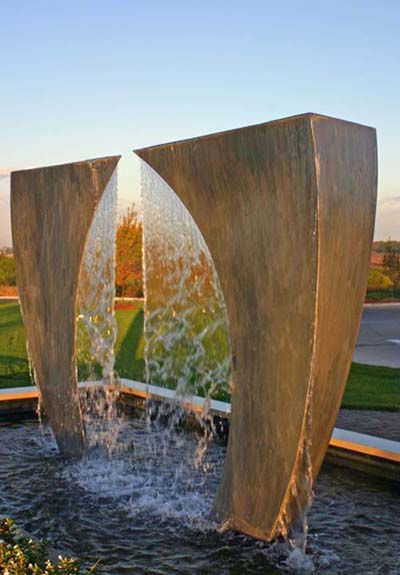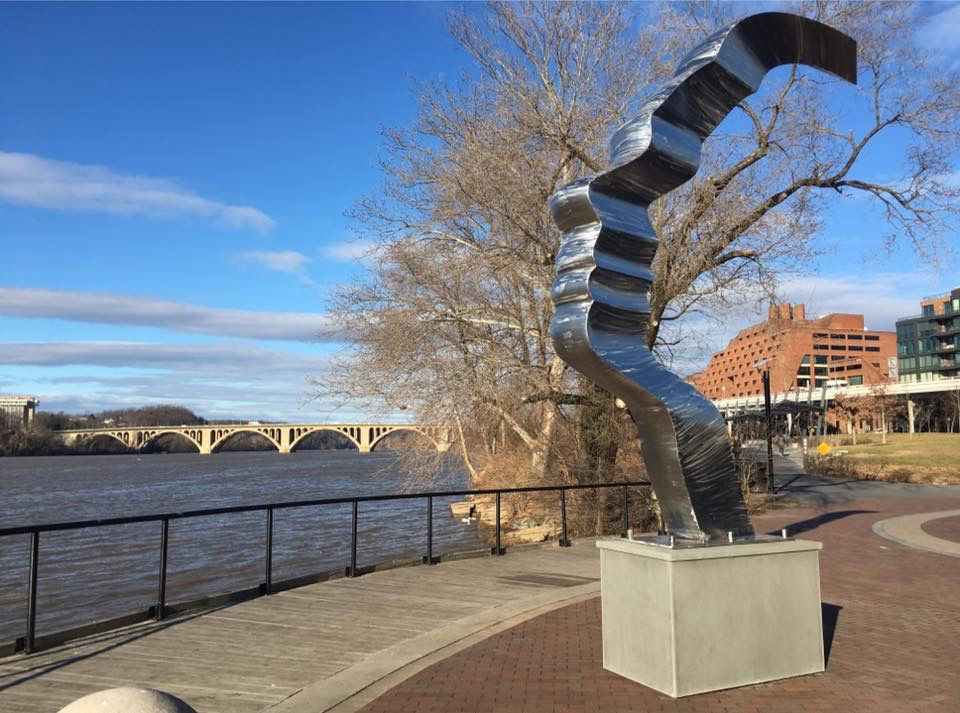Water Sculpture: Serenity in Motion
- sonya4083
- Aug 16
- 4 min read
Updated: Aug 17
Water has an unparalleled ability to soothe and inspire. From the soft sound of trickling streams to the rhythmic dance of waves, its presence transforms environments and elevates the human spirit. Across cultures and centuries, water has symbolized renewal, cleansing, and transcendence. Ancient civilizations, from Mesopotamia to Rome, built fountains not merely for utility but as symbols of life, power, and harmony. In Japanese gardens, carefully arranged water features still serve as meditative focal points. This long lineage continues today in the form of water sculptures for public spaces, where water remains a timeless medium for creating beauty, balance, and reflection.
When I design water sculptures, I strive to capture this enduring power. Water is never static, it moves, reflects, and transforms depending on light, atmosphere, and the presence of people. Unlike stone or metal, it cannot be controlled absolutely; it must be guided, invited, and respected. For me, this dialogue with water is part of the magic: it becomes an active collaborator, infusing sculpture with serenity, dynamism, and surprise.
Diamond Dance: A Sculpture of Light and Flow
One striking example is Diamond Dance, commissioned for the prestigious law firm Crowell & Moring LLP in Washington, D.C. Positioned at the center of the firm’s main lobby, it is both artwork and landmark, a living presence that greets visitors and shapes the identity of the space.
At its core is a diamond-shaped form, its polished stainless-steel surfaces acting as both mirror and stage for cascading water. From its peak, streams descend with graceful continuity, sliding down the sculpture’s facets before spilling onto a series of carefully engineered water tables below. These tables are not incidental; they are an integral part of the design. As water gathers and flows across them, it generates ripples and reflective surfaces that refract light upward, projecting shifting patterns onto the sculpture and its surroundings.

The effect is immersive. Depending on the time of day and angle of view, Diamond Dance appears to shimmer, undulate, or radiate light. In the morning, it may glow softly with the sun’s first rays. By evening, reflections scatter across the lobby walls, transforming the space into a living canvas of movement and light. This quality makes the sculpture endlessly engaging, never the same twice, always alive with subtle change.
"Water is not simply an element, it is an active participant in the life of a sculpture, adding movement, sound, and reflection that engages all the senses." —Barton Rubenstein
Engineering Elegance
While its elegance appears effortless, the creation of Diamond Dance required years of technical expertise. Engineering water is one of the most challenging aspects of sculpture design. It requires mastery of fluid dynamics, pump mechanics, material durability, and environmental behavior. Every flow had to be calibrated: too much water, and the cascade would overpower the design; too little, and it would fail to achieve its graceful continuity.
I selected materials capable of maintaining both beauty and resilience under constant use. The sculpture had to endure day after day, year after year, without compromising either function or aesthetic integrity. This marriage of engineering precision and artistic vision defines all successful monumental water sculptures, artworks that are as structurally sound as they are visually poetic.

Community, Playfulness, and Cultural Identity
Although Diamond Dance was conceived as a refined and sophisticated corporate water feature, it has developed an unexpected layer of community engagement. Over the years, staff began placing small rubber ducks in the sculpture’s water tables. What started as a whimsical gesture soon evolved into a cherished tradition, one that transformed the sculpture from an admired object into an interactive presence.
This playfulness reveals something profound about sculpture for public spaces: the most successful works are those that invite participation and foster a sense of ownership. Even within the formal atmosphere of a law firm, Diamond Dance became a source of joy and camaraderie. Employees now affectionately refer to it as “the soul of the firm,” a symbol that belongs to them as much as to the space.
Historically, public fountains and water features have often served as sites of gathering and play, places where people not only admired but also interacted with water. From Renaissance piazzas in Italy to contemporary urban plazas, these works have always blurred the line between art, function, and community life. Diamond Dance continues this tradition in a contemporary corporate setting, showing how public art can resonate far beyond its intended purpose.
In this way, the sculpture demonstrates that monumental art does not need to be solemn to be impactful. It can embody elegance and levity at once, speaking to professional identity while nurturing human connection. For developers, architects, and institutions, this is a powerful lesson: when monumental water sculptures succeed, they become not just landmarks, but living parts of daily culture.

The Role of Water Sculpture in Public and Corporate Life
Water sculptures are uniquely suited to shaping environments where people gather, move, and work. In civic plazas, they provide moments of serenity amid urban bustle, offering a place to pause, watch, and listen. In parks, they create sensory richness, inviting children to play, adults to reflect, and everyone to connect more deeply with nature. In corporate lobbies, they elevate atmosphere, softening architectural rigor with the organic flow of water, and projecting values of openness, renewal, and sophistication.
For developers and institutions, commissioning water sculptures for corporate spaces or civic plazas represents more than aesthetic choice, it is a strategic investment. These works enhance brand identity, increase foot traffic, build community, and contribute to placemaking, transforming buildings into destinations. A monumental water feature sculpture is not only an object of beauty but also a catalyst for community pride, interaction, and memory.
At their best, water sculptures embody a balance of art and nature. They invite us to pause in a fast-paced world, reminding us of the rhythms that endure beneath the noise. They elevate public and corporate environments, not simply by decorating them, but by animating them, turning architecture into experience, and spaces into fun and peaceful sanctuaries.





Comments